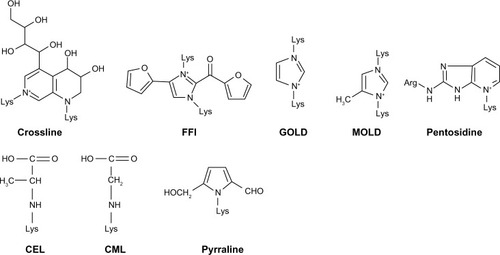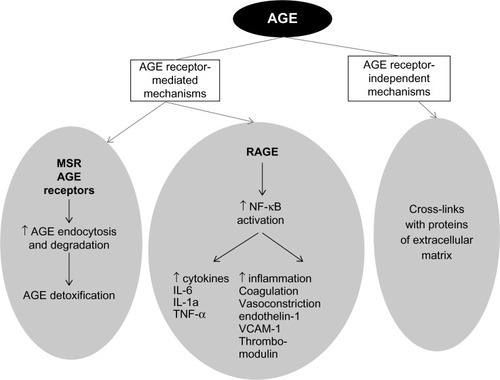Figures & data
Figure 1 Chemical structure of some advanced glycation end products (AGEs): crossline, 2-(2-furoyl)-4(5)-(2-furanyl)-1H-imidazole (FFI), glyoxal-lysine dimer (GOLD), methylglyoxal-lysine dimer (MOLD), pentosidine, N3-(carboxyethyl)lysine (CEL), N-carboxymethyl lysine (CML), and pyrraline.

Figure 2 Schematic representation of advanced glycation end product (AGE) mechanisms of action.
Abbreviations: IL-1a, interleukin-1a; IL-6, interleukin-6, MSR, macrophage scavenger receptor; NF-κB, nuclear factor-kappa B, RAGE, receptor for advanced glycation end products; TNF-α, Tumor necrosis factor-alpha; VCAM-1, vascular cell adhesion molecule-1.

Table 1 Advanced glycation end product (AGE) content in commonly consumed foodsTable Footnotea
Table 2 Interventions targeting the advanced glycation end product (AGE) pathway
Table 3 Recommendations for lowering advanced glycation end product (AGE) consumption
